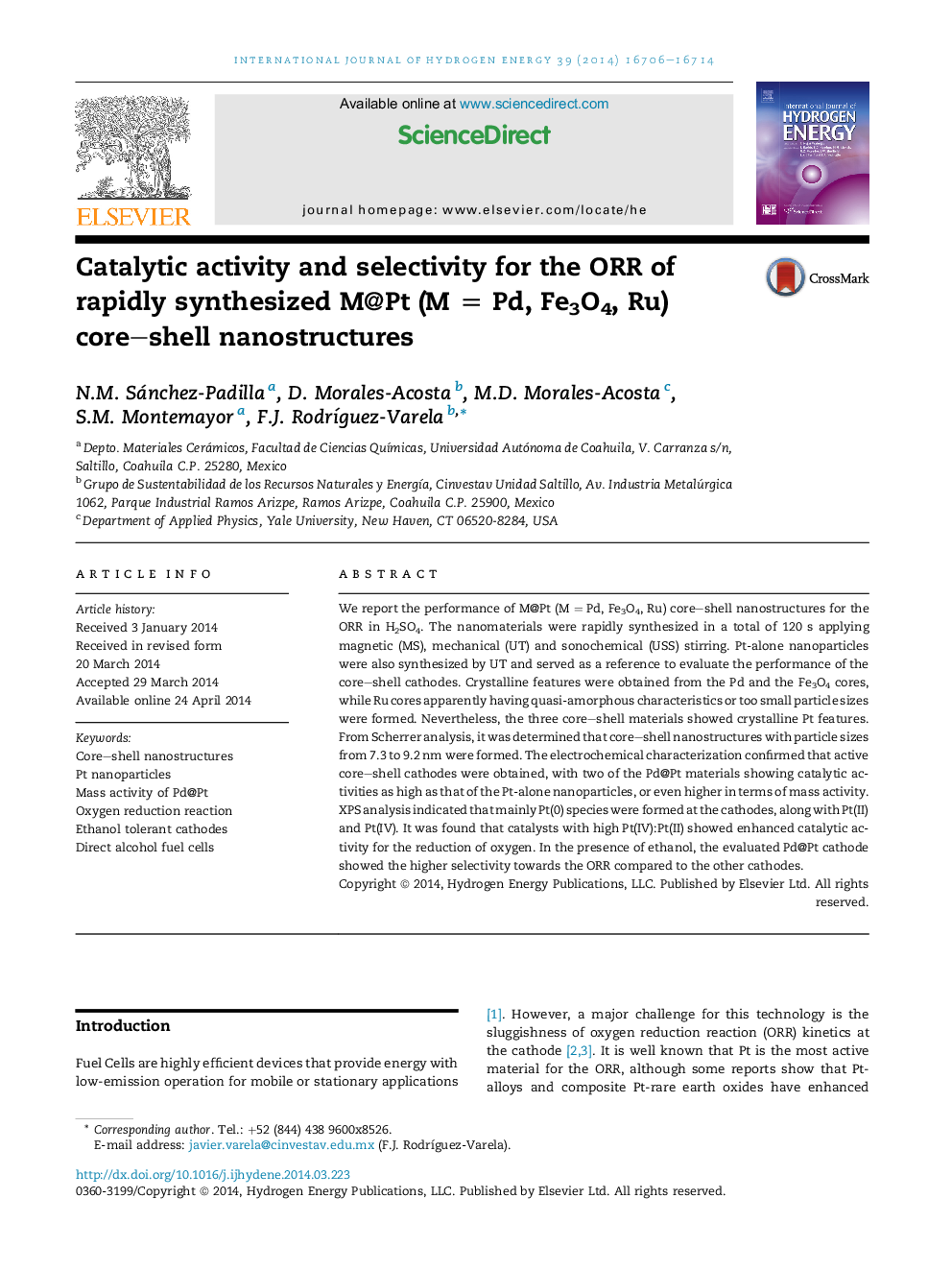| Article ID | Journal | Published Year | Pages | File Type |
|---|---|---|---|---|
| 1281012 | International Journal of Hydrogen Energy | 2014 | 9 Pages |
•Core–shell nanostructures synthesized in 120 s processes.•High catalytic activity of core–shell cathodes for the ORR.•Higher mass catalytic activity of Pd@Pt than Pt.•Higher tolerance of Pd@Pt to the presence of ethanol.•Effect of oxides on the catalytic activity for the ORR evaluated by XPS.
We report the performance of M@Pt (M = Pd, Fe3O4, Ru) core–shell nanostructures for the ORR in H2SO4. The nanomaterials were rapidly synthesized in a total of 120 s applying magnetic (MS), mechanical (UT) and sonochemical (USS) stirring. Pt-alone nanoparticles were also synthesized by UT and served as a reference to evaluate the performance of the core–shell cathodes. Crystalline features were obtained from the Pd and the Fe3O4 cores, while Ru cores apparently having quasi-amorphous characteristics or too small particle sizes were formed. Nevertheless, the three core–shell materials showed crystalline Pt features. From Scherrer analysis, it was determined that core–shell nanostructures with particle sizes from 7.3 to 9.2 nm were formed. The electrochemical characterization confirmed that active core–shell cathodes were obtained, with two of the Pd@Pt materials showing catalytic activities as high as that of the Pt-alone nanoparticles, or even higher in terms of mass activity. XPS analysis indicated that mainly Pt(0) species were formed at the cathodes, along with Pt(II) and Pt(IV). It was found that catalysts with high Pt(IV):Pt(II) showed enhanced catalytic activity for the reduction of oxygen. In the presence of ethanol, the evaluated Pd@Pt cathode showed the higher selectivity towards the ORR compared to the other cathodes.
Graphical abstractFigure optionsDownload full-size imageDownload as PowerPoint slide
